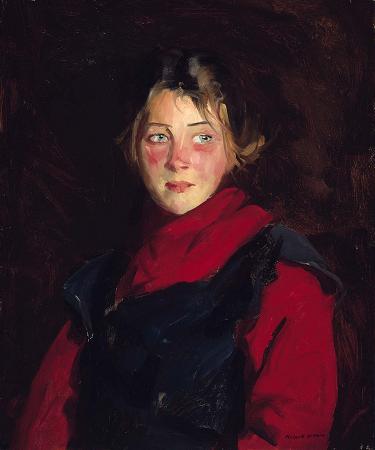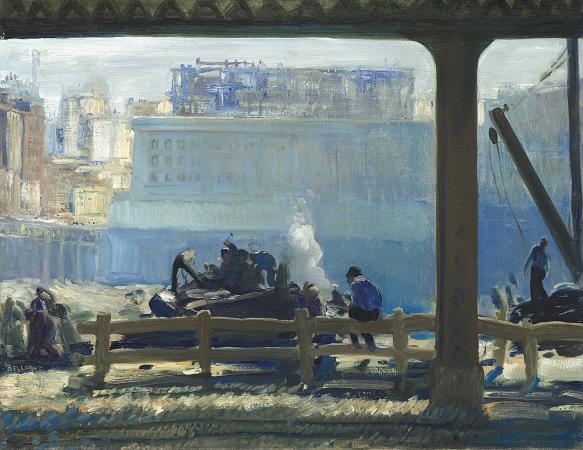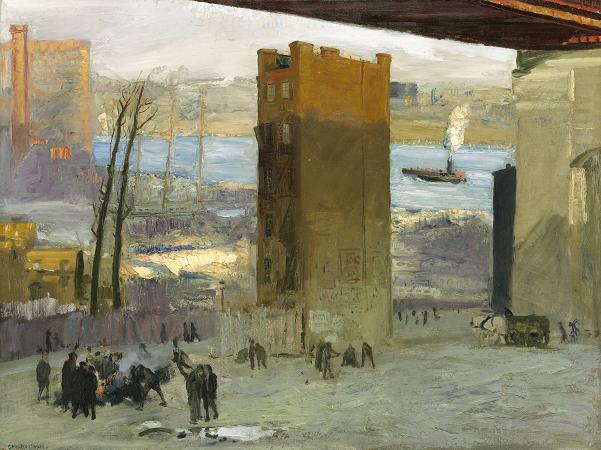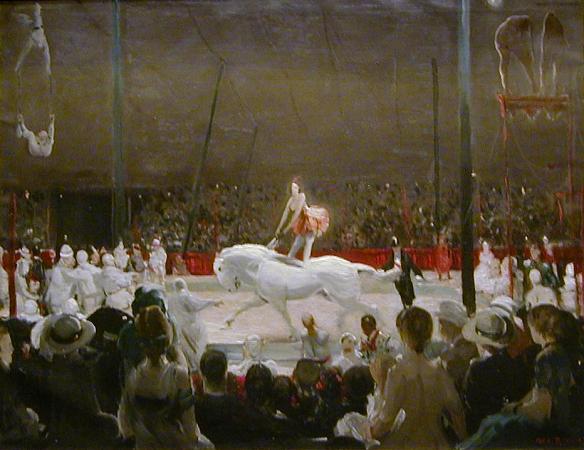George Bellows (1882 - 1925). George Wesley Bellows was an American realist painter, known for his bold depictions of urban life in New York City. He became, according to the Columbus Museum of Art, the most acclaimed American artist of his generation. George Wesley Bellows was born and raised in Columbus, Ohio. He was the only child of George Bellows and Anna Wilhelmina Smith Bellows. He was born four years after his parents married, at the ages of fifty and forty. His mother was the daughter of a whaling captain based in Sag Harbor, Long Island, and his family returned there for their summer vacations. He began drawing well before kindergarten, and his elementary-school teachers often asked him to decorate their classroom blackboards at Thanksgiving and Christmas. At age 10, George took to athletics, and trained to be a baseball and basketball player. He became good enough at both sports to play semipro ball for years afterward. During his senior year, a baseball scout from the Indianapolis team made him an offer. He declined, opting to enroll at The Ohio State University. There he played for the baseball and basketball teams, and provided illustrations for the Makio, the school's student yearbook. He was encouraged to become a professional baseball player, and he worked as a commercial illustrator while a student and continued to accept magazine assignments throughout his life. Despite these opportunities in athletics and commercial art, Bellows desired success as a painter. He left Ohio State in 1904, just before he was to graduate, and moved to New York City to study art. Bellows was soon a student of Robert Henri, who at the time was teaching at the New York School of Art. While studying there, Bellows became associated with Henri's The Eight and the Ashcan School, a group of artists who advocated painting contemporary American society in all its forms. By 1906, Bellows and fellow art student Edward Keefe had set up a studio at 1947 Broadway. Bellows first achieved widespread notice in 1908, when he and other pupils of Henri organized an exhibition of mostly urban studies. While many critics considered these to be crudely painted, others found them welcomely audacious, a step beyond the work of his teacher. Bellows taught at the Art Students League of New York in 1909, although he was more interested in pursuing a career as a painter. His fame grew as he contributed to other nationally recognized juried shows. Bellows' urban New York scenes depicted the crudity and chaos of working-class people and neighborhoods, and satirized the upper classes. From 1907 through 1915, he executed a series of paintings depicting New York City under snowfall. In these paintings Bellows developed his strong sense of light and visual texture, exhibiting a stark contrast between the blue and white expanses of snow and the rough and grimy surfaces of city structures, and creating an aesthetically ironic image of the equally rough and grimy men struggling to clear away the nuisance of the pure snow. However, Bellows' series of paintings portraying amateur boxing matches were arguably his signature contribution to art history. They are characterized by dark atmospheres, through which the bright, roughly lain brushstrokes of the human figures vividly strike with a strong sense of motion and direction. Growing prestige as a painter brought changes in his life and work. Though he continued his earlier themes, Bellows also began to receive portrait commissions, as well as social invitations, from New York's wealthy elite. Additionally, he followed Henri's lead and began to summer in Maine, painting seascapes on Monhegan and Matinicus islands. At the same time, the always socially conscious Bellows also associated with a group of radical artists and activists called the Lyrical Left, who tended towards anarchism in their extreme advocacy of individual rights. He taught at the first Modern School in New York City, and served on the editorial board of the socialist journal, The Masses, to which he contributed many drawings and prints beginning in 1911. However, he was often at odds with other contributors due to his belief that artistic freedom should trump any ideological editorial policy. Bellows also notably dissented from this circle in his very public support of U.S. intervention in World War I. In 1918, he created a series of lithographs and paintings that graphically depicted atrocities which the Allies said had been committed by Germany during its invasion of Belgium. Notable among these was The Germans Arrive, which gruesomely illustrated a German soldier restraining a Belgian teen whose hands had just been severed. However, his work was also highly critical of the domestic censorship and persecution of antiwar dissenters conducted by the U.S. government under the Espionage Act.
more...














